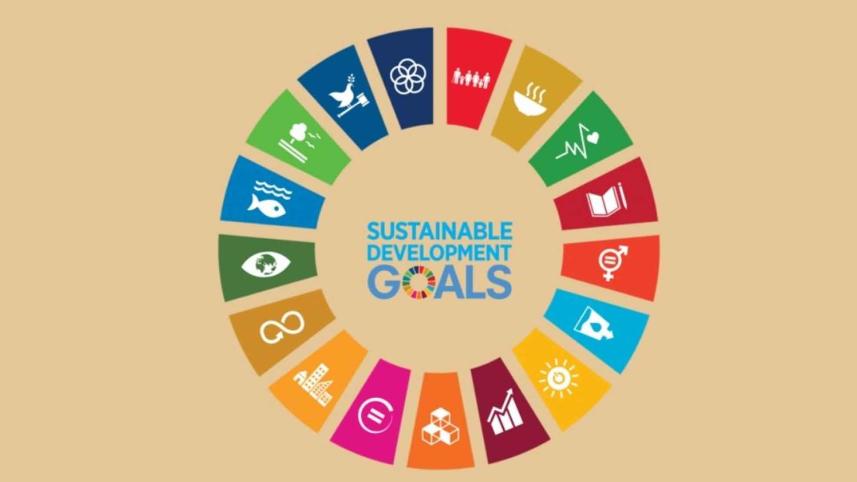Why revisit SDG financing strategy in Bangladesh?

Recently, the United Nations published the Financing for Sustainable Development Report 2022, highlighting the slow progress of Covid-19 recovery in developing countries due to fiscal constraints, while developed economies recovered quickly by borrowing a record amount of low-interest loans. This discrepancy among countries has been defined as the "Great Finance Divide."
Bangladesh, which is set to become a developing country by 2026, started to meet the SDGs early, backed by strong political commitment as well as the achievements during the Millennium Development Goals (MDGs) era. But like the rest of the world, Covid had a negative impact on Bangladesh's economy, causing a setback to the hard-earned progress in poverty alleviation. Consequently, the GDP growth has slowed down since FY2019-20 (3.5 percent), and is predicted to continue at 6.7 percent in FY2022-23. As a result, investments into SDG-aligned projects have shrunk. It is, thus, critical to address how Bangladesh, as a lower middle income country, is strategically preparing to respond to the crisis and access to productive investments, which are pivotal for achieving the SDGs by 2030.
Setting up Integrated National Financing Framework (INFF)
The INFF is the tool to implement the Addis Ababa Action Agenda (the framework outlined in 2015 on financing for development) at the national level by supporting countries in their planning process and overcoming their barriers to SDG financing. The Bangladesh government and the UN are jointly implementing a programme titled the Integrated National Financing Framework for Accelerating Achievement of SDGs in Bangladesh (INFF4SDGs), which began in 2020, to support the government in mobilising resources and filling up the financial gaps for attaining the SDGs.
Calibrating the Development Finance Assessment (DFA)
Currently, the Economic Relations Division (ERD) under the finance ministry, with technical support from the UN Development Programme (UNDP), has been re-assessing the development finance landscape (first conducted in 2016) to identify the gaps, opportunities, and options of policy reforms that can mobilise new forms of public and private financing, strengthen collaboration across the ministries and with the private sector, and boost government policies for managing, measuring, and influencing financing in the context of the 8th FYP, Agenda 2030 and Covid recovery. The findings of the DFA will support the government and other stakeholders—e.g. the private sector, development partners, civil society organisations, etc—to take a more integrated approach to SDG financing.
Re-estimating SDG financing requirements with new realities
The SDG financing strategy lies at the core of INFF operationalisation. Therefore, the General Economics Division (GED) under the planning commission prepared the first SDG financing strategy in 2017 to estimate the overall additional costs of implementing all 17 SDGs. However, considering the new realities—e.g. graduation from the LDC status, the Covid pandemic, need for creating innovative fiscal spaces and developing business models for the private sector to strike a balance between profit maximisation and social objectives—the financing strategy has been re-calculated with technical support from the UNDP.
Unlocking market opportunities of the private sector
While the public sector and public finance are central to the implementation of SDGs, the private sector and capital markets must also play a key role. According to the SDG financing strategy, Bangladesh requires an additional USD 928 billion to implement SDGs by 2030, of which the private sector accounts for 42 percent. Therefore, to unlock the private sector's potential, UNDP Bangladesh has initiated an SDG Investor Mapping to help investors identify investment opportunity areas (IOA) by providing real-time market intelligence needed by the private sector to increase investments towards achieving the SDGs. Collaborations between the right matches are the next step, catalysing the financial flow into SDG-aligned investments. A database of these projects will be hosted in a pipeline builder (Virtual Investment Platform), offering an avenue for an investor to search, select and invest in potential projects based on certified investment and market analytics.
Uncapping Bangladesh's potential in financing SDGs
Innovative instruments like the potential of Islamic financing (e.g. Zakat Fund) and SDG bonds in Bangladesh can be new sources of resource mobilisation. Also, Blended Financing, an instrument to use public funds to unlock private investment in support of the country's efforts for sustainable development, could be a useful frontier.
Institutionalisation of a national-level multistakeholder platform can strategically guide the updating process of existing policies and strategies, monitor and review the public and private investments in light of SDG financing, and build a concrete pipeline of bankable projects.
Finally, the implementation of this ambitious Agenda 2030 requires not just more financial resources, but collective efforts and coordination to improve efficient allocation, effective operations, and the impact of SDG-aligned projects and programmes.
Sk Abdullah Jonayed is a sustainable development specialist, currently working at UNDP Bangladesh. Views expressed in this article are his own.



 For all latest news, follow The Daily Star's Google News channel.
For all latest news, follow The Daily Star's Google News channel.
Comments